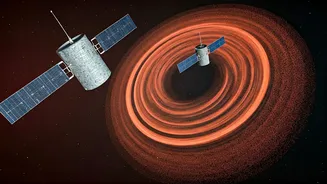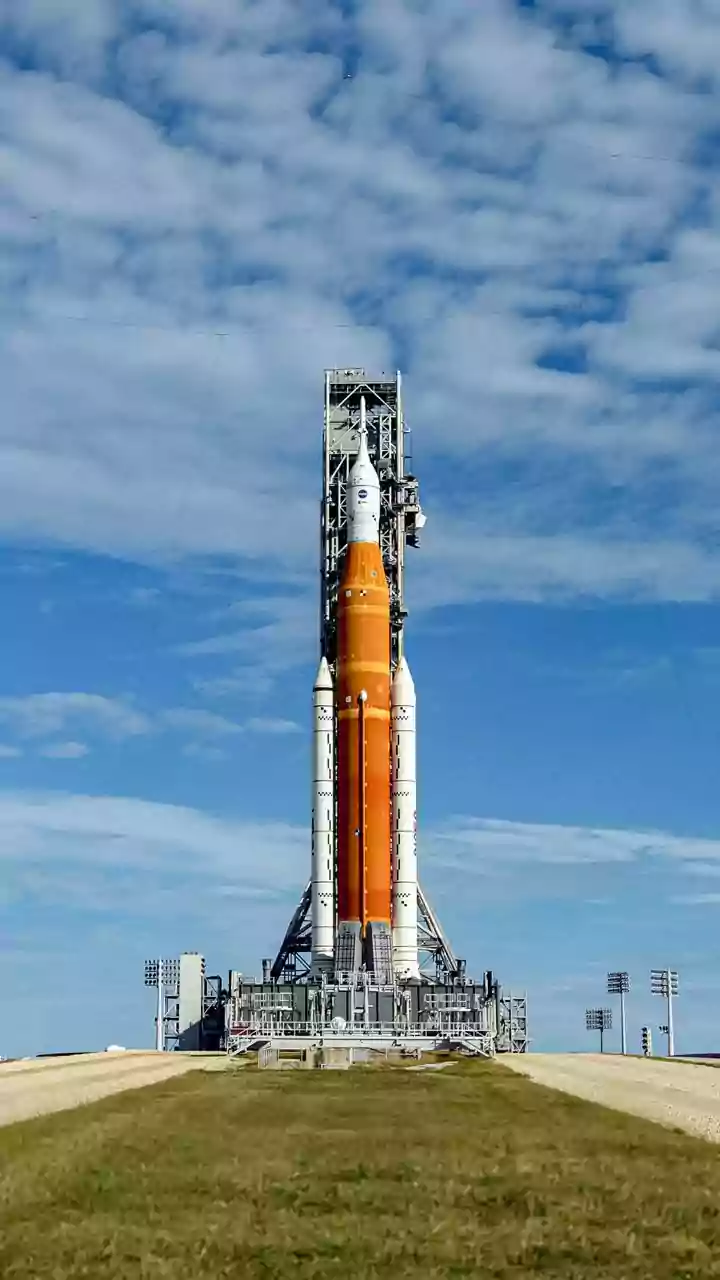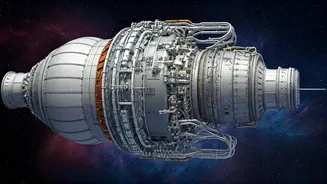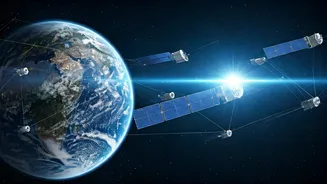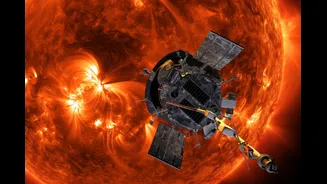Mission's Core Aims
The ESCAPADE mission, spearheaded by NASA, is designed with a singular, profound purpose: to unlock the secrets behind Mars' atmospheric evolution. The focus
is to discern the mechanisms through which the planet transitioned from a potentially habitable state, possibly capable of supporting liquid water and a thicker atmosphere, to its current cold, dry condition. To achieve this, the mission employs two identical spacecraft that will orbit Mars. These probes will be equipped with a suite of instruments engineered to scrutinize the planet's atmospheric composition, density, and how the solar wind interacts with it. This study aims at determining how Mars lost its atmosphere and, consequently, its surface water over billions of years. Understanding this transition can help scientists refine models of planetary evolution, providing crucial insights into the potential for life beyond Earth, and giving a better comprehension of how a planet's atmosphere can be lost.
Dual Spacecraft Approach
A distinguishing characteristic of the ESCAPADE mission is its use of twin probes. These spacecraft, identical in design and instrumentation, will operate in tandem to gather comprehensive data. By having two vantage points, scientists can create a more nuanced view of the Martian environment. This dual-probe strategy allows for measuring spatial variations in atmospheric conditions. The probes will follow slightly different orbits, providing an enhanced ability to monitor changes. The combined data from these probes is expected to offer a more accurate and comprehensive understanding of the Martian atmosphere. This setup helps in determining the influence of solar flares, the solar wind, and seasonal changes on the atmosphere. The innovative approach not only allows for detailed data collection but also ensures that critical data isn't missed due to equipment failure on a single spacecraft.
Unveiling Atmospheric Secrets
The spacecraft are equipped with several instruments essential for probing the Martian atmosphere. These tools are designed to measure key atmospheric characteristics such as temperature, pressure, and the concentration of various gases, including oxygen, carbon dioxide, and water vapor. Crucially, the instruments are engineered to evaluate how the solar wind influences the Martian atmosphere. The solar wind, a stream of charged particles emitted by the Sun, can strip away a planet's atmosphere over time. Another vital aspect of the mission is assessing the interaction between the planet's upper atmosphere and the ionosphere. Data gathered will shed light on the processes contributing to atmospheric loss, providing a comprehensive assessment of the factors leading to Mars' present climate. The insights obtained will contribute substantially to our broader understanding of planetary atmospheric dynamics. This information is critical for refining models of planetary evolution and predicting the long-term habitability of worlds beyond our own.
Mission's Potential Impact
The ESCAPADE mission is expected to deliver substantial advancements in our comprehension of planetary atmospheres. The data gathered could potentially help clarify the reasons behind Mars' transformation from a potentially habitable world to its present state. The findings from this mission will inform models of atmospheric evolution, and contribute significantly to our understanding of the factors that lead to atmospheric loss on other planets. This mission stands to offer a more thorough understanding of how planetary atmospheres and climates evolve. By establishing a more detailed understanding of the Martian atmosphere and how it has changed over time, researchers can develop more accurate models for predicting the habitability of other planets. The information obtained from ESCAPADE will enable a more nuanced understanding of planetary science and potentially shape our search for life beyond Earth.
